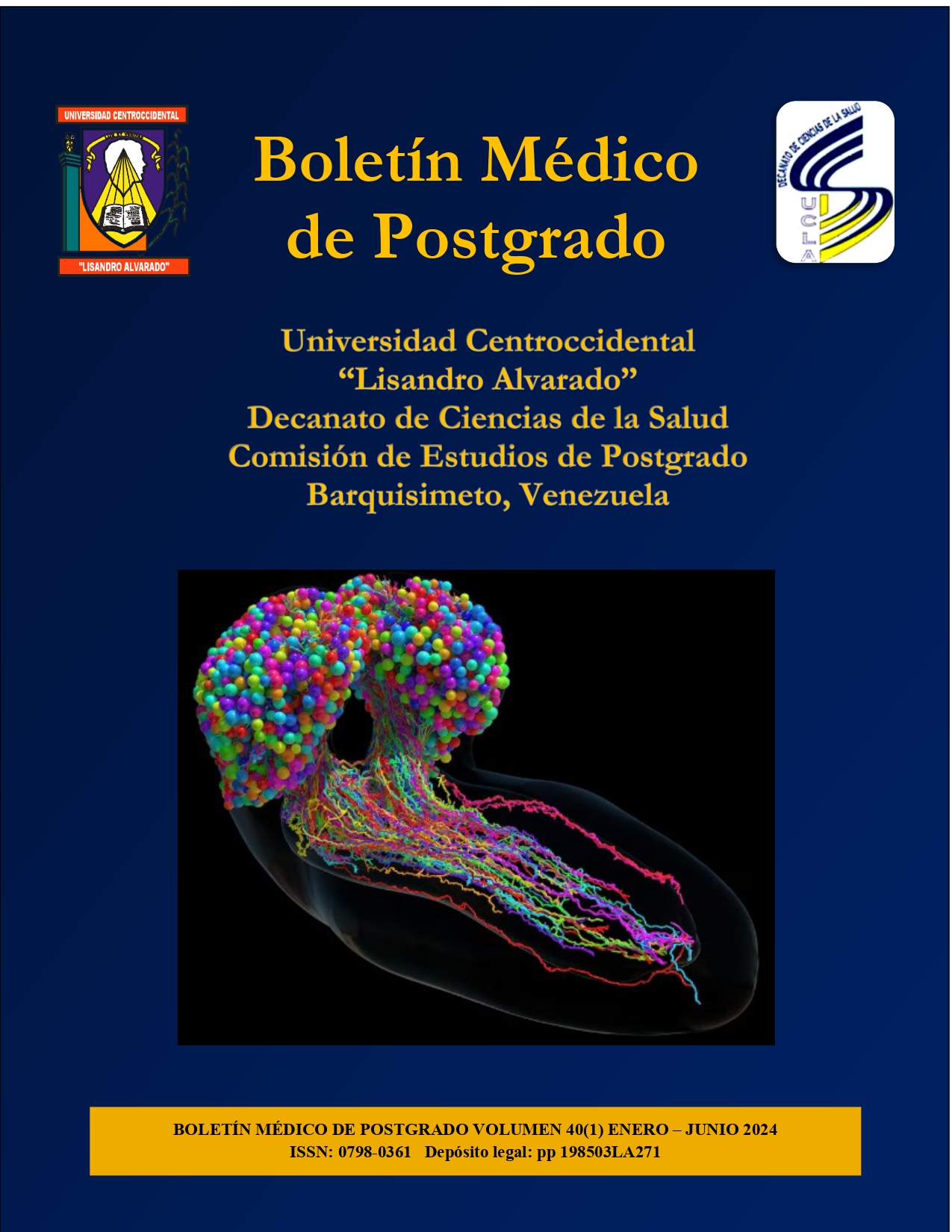Attempted self-injury and associated risk factors in patients 7 to 13 years of age admitted to the Servicio Desconcentrado Hospital Universitario Pediátrico Dr. Agustín Zubillaga
Abstract
Self-injury is the act by which a person intentionally causes death. The aim of this research was to determine the frequency of attempted self-injury and the associated risk factors in 35 patients aged 7 to 13 years who were admitted to the Emergency Department of the Servicio Desconcentrado Hospital Universitario Pediatrico Dr. Agustin Zubillaga during the period January 2017 to June 2022. 63% of the patients were female and 91% of them were older than 10 years old. Eighty-three percent of the patients had no pathological medical history, 97% had no psychiatric pathology and 86% of the cases showed no history of medication use. In 83% of the cases there was no family history of suicide. In the Graffar scale it was found that 61% of the cases were located in stratum IV. Ninety-one percent of the patients were studying and 77% of them were in high school. In 42% of the cases the family group consisted of 4 members. Thirty-nine percent of the patients lived with their mother and siblings and 30% with their father and siblings. Regarding the filial relationship, most of them had no relationship with their parents (33%) and 19% had a bad relationship. In 78% of the cases, some type of substance was ingested orally as a method of self-injury. In 94% of the cases, the attempt at self-injury occurred at home and was unsuccessful. Sixty-seven percent had not attempted it before and 61% had no warning beforehand. The main reasons for attempted self-harm were fights with relatives (51%) and arguments with the mother (17%).
Downloads
References
Suicidio [Internet]. Who int. Disponible en: https://www.who.int/es/news-room/fact-sheets/detail/suicide.
Gerstner R, Soriano I, Sanhueza A, Caffe S, Kestel D. Epidemiología del suicidio en adolescentes y jóvenes del Ecuador. Epidemiología del suicidio de adolescentes y jóvenes en Ecuador. Rev Pan Am Salud Publica 2018; 42:e100.
Kennebeck S, Bonin L. Suicidal behavior in children and adolescents: Evaluation and management. Disponible en: https://www.uptodate.com/contents/search.
Rosenbaum J, Hughes J, Babeva K, Sugar CA. Cognitive-Behavioral Family Treatment for Suicide Attempt Prevention: A Randomized Controlled Trial. J Am Acad Child Adolesc Psychiatry 2017; 56(6): 506-514.
Liu R, Walsh R, Sheehan A, Cheek S, Sanzari C. Prevalence and Correlates of Suicide and Nonsuicidal Self-injury in Children: A Systematic Review and Meta-analysis. JAMA Psychiatry 2022; 79(7): 718-726.
Marraccini M, Drapeau C, Stein R, Pittleman C, Toole E, Kolstad M, Tow AC, Suldo S. Characterizing children hospitalized for suicide-related thoughts and behaviors. Child Adolesc Ment Health. 2021; 26(4): 331-338.
Becker M, Correll C. Suicidality in Childhood and Adolescence. Dtsch Arztebl Int 2020; 117(15): 261-267.
Huber R, Sheth C, Renshaw P, Yurgelun-Todd D, McGlade E. Suicide Ideation and Neurocognition Among 9- and 10-Year Old Children in the Adolescent Brain Cognitive Development (ABCD) Study. Arch Suicide Res 2022; 26(2): 641-655.
Witt K, Hetrick S, Rajaram G, Hazell P, Taylor T, Townsend E, Hawton K. Interventions for self-harm in children and adolescents. Cochrane Database Syst Rev 2021; 3(3): CD013667.
Published
How to Cite
Issue
Section

This work is licensed under a Creative Commons Attribution-NonCommercial-ShareAlike 4.0 International License.
Las opiniones expresadas por los autores no necesariamente reflejan la postura del editor de la publicación ni de la UCLA. Se autoriza la reproducción total o parcial de los textos aquí publicados, siempre y cuando se cite la fuente completa y la dirección electrónica de esta revista. Los autores(as) tienen el derecho de utilizar sus artículos para cualquier propósito siempre y cuando se realice sin fines de lucro. Los autores(as) pueden publicar en internet o cualquier otro medio la versión final aprobada de su trabajo, luego que esta ha sido publicada en esta revista.



